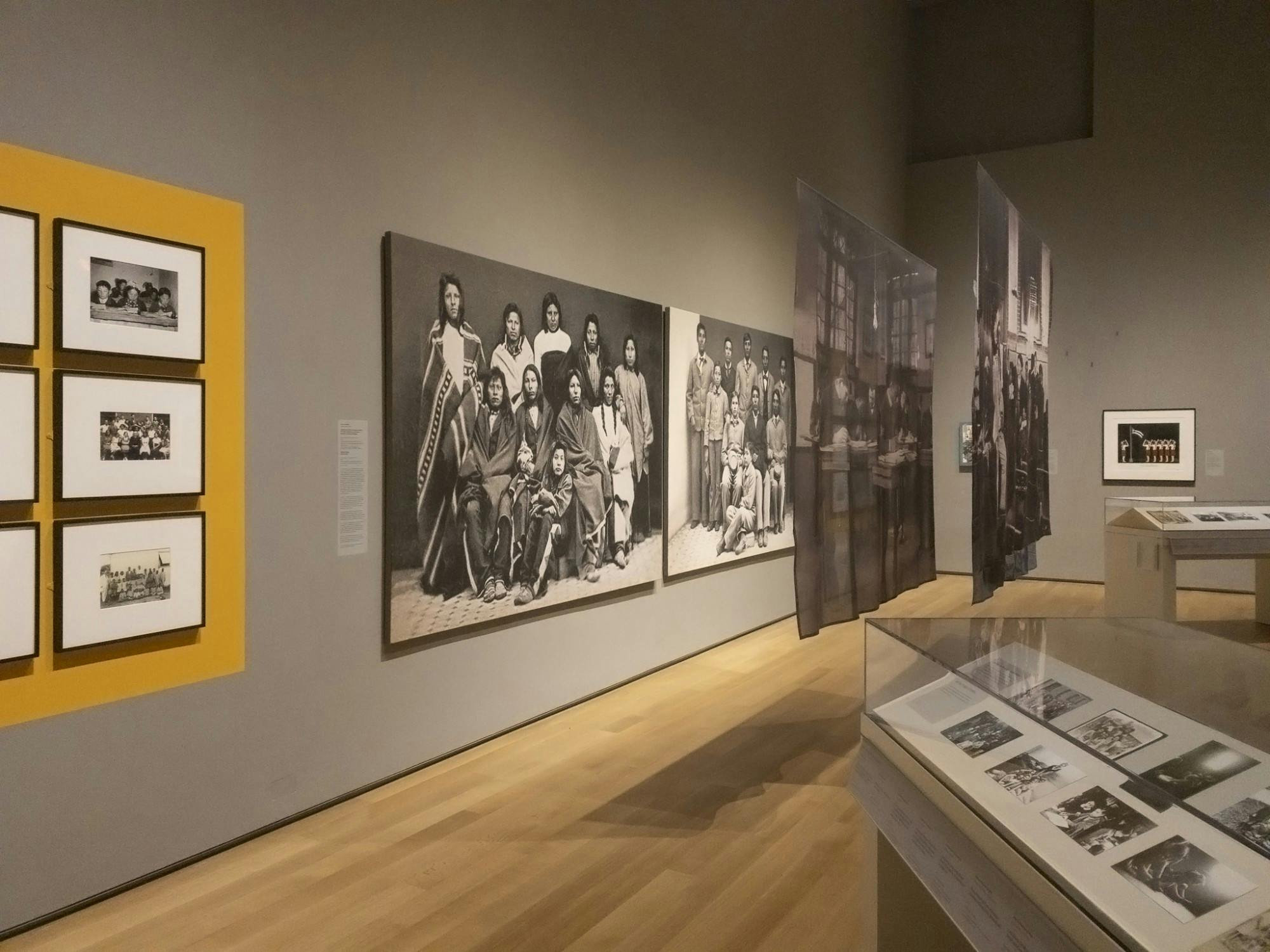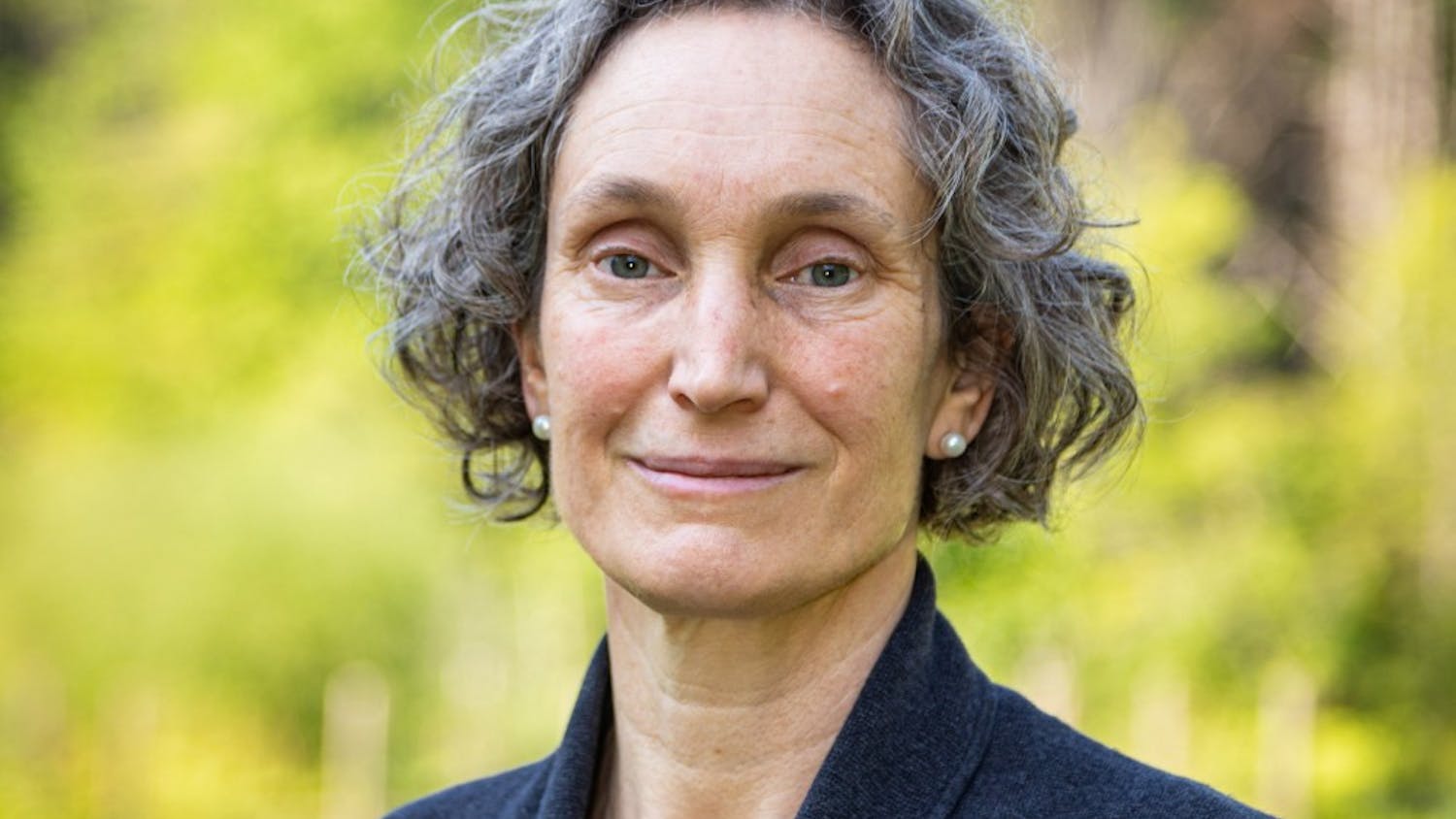It could be argued that one of the most common photographs to be taken is a school photo. The majority of people have been in or seen one. Normally, they are not usually viewed as controversial.
In the “School Photos and Their Afterlives” exhibit currently on display in the Hood Museum, history professor emeritus Leo Spitzer and Columbia University English professor Marianne Hirsch, in coordination with the Hood’s academic programming curator and coordinator for the exhibit Amelia Kahl, developed an exhibition specifically designed to expose the underlying themes of conformity and repression in societies around the world. The exhibit displays a variety of archival school photos and other pieces where artists take a stand and utilize school photos in different ways.
According to Kahl, the school photo is a form of art that many people encounter in their lives.
“Many of us have been through that process,” Kahl said. “So [the curators] are thinking about that visual conceit and how that plays out over time and in different places. They are really using that idea of the school photo as a way to talk about major issues historically and in contemporary life — mainly issues of assimilation.”
The exhibit has three sections: “Europe and Its ‘Others,’” “The United States and Its ‘Others,’” and “Imagining Justice.” “Europe and Its ‘Others’” includes reminders of the importance of education across cultures and time periods, showing photos of children going to school during war times as a sign of hope. It also shows the segregation and assimilation central to life in colonial territories. “The United States and Its ‘Others’” focuses on the forced integration of Native Americans and African Americans into the dominant white American culture and the subsequent suppression of their own cultures. In addition, there are scenes from Japanese internment camps showing how, even in prison, there is still value placed in education. In “Imagining Justice,” the camera turns to the unrealized futures of Mexican and Argentinian students who were murdered or disappeared under dictatorial rule.
When discussing the inspiration behind the exhibition, Spitzer said that the school photo is a meaningful form of art produced by the technical innovation as well as the development of state-accredited education in the 19th century.
“Then we began to think about the school photo in terms of the efforts to manage the various populations in a state,” Spitzer said. “Ethnic, national, racialized differences — authorities used photographs to further assimilation of social norms and transformative ideology because they suppress differences.”
Though the exhibit exposes and often emphasizes the negative, forced assimilation associated with school photos and how they are used to reinforce dominant societal norms, there are also images that foster hope through resistance.
“We have photographs taken in Jewish ghettos during the Nazi era, secretly, while schools were suppressed and cameras were basically suppressed,” Spitzer said. “This was the equipment that you needed to make photographs and yet photos were taken, and that’s the amazing thing. That kind of resistance also manifested in school photos. So they’re not all bad; they can be used in a much more positive way. We would hope that people would come away [from the exhibit] having realized some of the complexity in that visual — both visible and invisible — that is involved in a photo.”
With such a variety of works and points on display, each person who enters the exhibit can find something to connect to. This idea, according to Hood engagement coordinator Isadora Italia, makes the exhibition all the more powerful.
“It’s a really thought-provoking show,” Italia said, “I think there’s a lot of opportunity to teach with it and to learn from it, and I think that’s really at the heart of our mission [at the Hood].”
Situated in the context of a college art museum where the target audience is students, a new dimension is layered onto the interpretation of the exhibit.
“I think this show can bring up a really relevant question for Dartmouth students, which is, ‘How much of my individuality, how much of my uniqueness, am I able to show here at school, and how much conformity is expected of me?’ That’s something that students try to struggle with and negotiate and balance,” Kahl said.
Kahl explained that, with the combination of the strong culture of Dartmouth’s campus and how it contrasts with the rapidly changing world outside, students can struggle to define themselves and find their place. This internal and societal conflict, however, leads to greater growth and the formation of a stronger individual identity, which has immense value because it is only through this that the culture surrounding assimilation and conformity can ever truly change, Kahl said.
“School Photos and Their Afterlives” will be on display until April 12.



